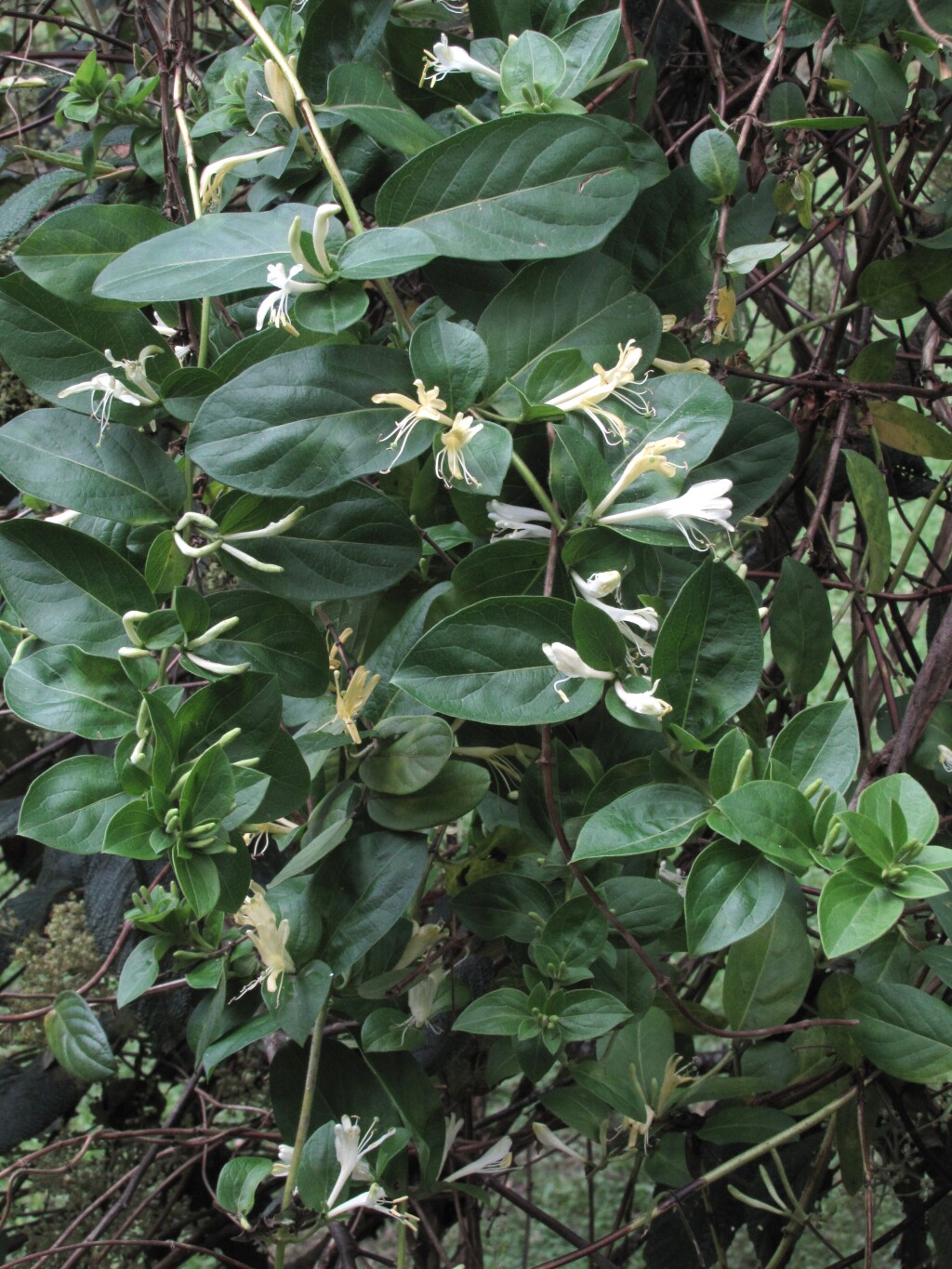Lonicera japonica
Thunb. Japanese HoneysuckleClimber or scrambler, often very dense, climbing c. 10 m high, evergreen or weakly deciduous; young stems pubescent. Leaves ovate to ovate-oblong, mostly 3–8 cm long and 1–4 cm wide, apex short-acuminate to obtuse, base obtuse, margins entire or lobed in juvenile phase, discolorous, surfaces virtually glabrous except for appressed hairs along veins and margins; petioles 3–10 mm long. Flowers in pairs in upper leaf-axils, fragrant; peduncle 5–50 mm long; outer bracts leafy, 5–20 mm long, green; inner bracts scale-like; sepals linear-triangular, 1.5–2.5 mm long, ciliate; corolla 20–30 mm long, 2-lipped, white, often purplish outside, turning yellowish. Ovaries hairless. Berry ovoid, 6–10 mm long, shiny black. Flowers mainly autumn and winter.
VVP, VRiv, GipP, OtP, WaP, Gold, CVU, DunT, NIS, EGL, EGU, HSF, HNF, OtR, Strz, VAlp. Also naturalised WA, SA, Qld, NSW, ACT, Tas. Native to eastern Asia. A much-cultivated ornamental that has become a serious weed, particularly in disturbed riparian habitats and moist, sheltered forests.
Jeanes, J.A. (1999). Caprifoliaceae. In: Walsh, N.G.; Entwisle, T.J., Flora of Victoria Vol. 4, Cornaceae to Asteraceae, pp. 642–647. Inkata Press, Melbourne.
 Spinning
Spinning



